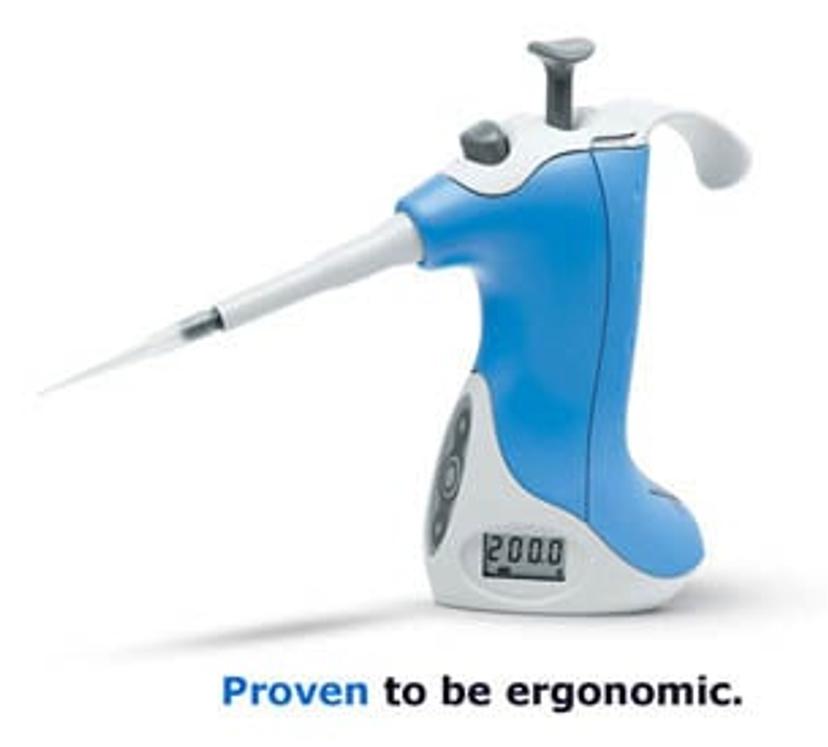The Importance of Ergonomically Designed Pipettes
Learn what makes a pipette ergonomic in this insightful article from VistaLab Technologies
14 Aug 2017

VistaLab Technologies take the science of ergonomics quite seriously. They have spent years working with ergonomic experts to study the physiological dynamic of pipetting and the root causes behindinjury. It was clear that simply decreasing button pressure or changing a grip wouldn’t make a pipette ergonomic – an entirely new type of device needed to be designed in order to truly minimize the risk factors so common with traditional pipettes.
When selecting the best pipette, start by looking at the facts.
Ovation is a whole new class of pipette – not an adaptation of an old product. Its unique design and features specifically target all the causes of stress, discomfort and pain. In fact, in a recent comparative study1 between axial-style pipettes and Ovation, NIOSH concluded that Ovation “showed a significant reduction in the most important MSD (musculoskeletal disorder) risk factors for pipetting…”
To be “ergonomically correct”, significant changes to traditional pipetting postures are essential – like minimizing forearm and wrist rotations, keeping a low arm and elbow height, and relaxing the shoulders and upper arms. This is virtually impossible when using pipettes with elongated axial designs.
A number of pipette manufacturers have made changes to their old product designs and now label them as “ergonomic”. However, none of these changes affect pipetting posture – the true culprit behind prevalent injuries like carpal tunnel syndrome, tendinitis and a host of other musculoskeletal disorders. In fact, it is quite easy to see these pipettes are all somewhat similar – with the same elongated axial design their predecessors have featured for decades.

